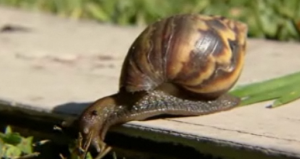Vietnamese health officials in the Mekong Delta province of Ca Mau are reporting the case of a 10-year-old boy who has been hospitalized with an infection with the rat lungworm, Angiostrongylus cantonensis.

He is currently recovering from the infection at a Ho Chi Minh City hospital neurology and infectious disease ward.
The boy’s mother said she was unaware of the dangers of eating snails. “We are not aware of the danger of eating snails. Residents here often catch snails and eat them because the rumor is that snails help treat aches and pains,” she said.
A hospital spokesperson said the infection is relatively rare but not unheard of. Last year, the ward admitted as many as 30 children, most of whom were from rural areas.
Angiostrongyliasis is an infection caused by the rat lungworm, Angiostrongylus cantonensis. This is aparasitic infection in rats where it matures. Mollusks like snails and slugs pick up Angiostrongylus larvae by ingesting them in rat feces.
Infection with this parasite occurs by accidentally or intentionally ingesting raw snails and slugs. Lettuce and other leafy vegetables may also be a source if contaminated by small mollusks. Eating raw or undercooked prawns and crabs that have ingested mollusks may also be a source of infection.
Angiostrongylus cantonensis infection is usually asymptomatic or mildly symptomatic. Symptoms usually appear in 1-3 weeks. The most serious disease is eosinophilic meningitis. The symptomscan includeheadache, stiff neck, tingling or painfulfeelings in the skin, low-grade fever, nausea, and vomiting.Symptoms may last for weeks to months. The spinal fluid exhibits eosinophilia of over 20%. Deaths are rarely reported.
Prevention of this nematode is by not eating raw or undercooked snails or slugs, cook crabs and prawns to kill the larvae and thoroughly clean lettuce and other produce.


2 thoughts on “Rat lungworm infection: The danger of eating uncooked snails”